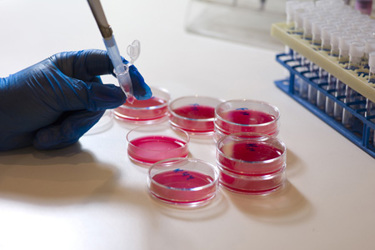T-Cell-Dependent Antibody Responses And Immunopathology
By Norbert Makori

The objectives of this study were two-fold: to compare T-cell dependent antibody responses (TDAR) to keyhole limpet hemocyanin (KLH) in juvenile and mature nonhuman primates (NHPs) and to analyze a retrospective dataset of organ microscopic evaluation in infants from different origins. Given the limited availability of NHP infants, it has become evident that a deeper understanding of historical data from various origins is essential to optimize the use of this valuable resource for safety assessments of therapies targeting rare diseases, particularly gene-, cell-, and oligonucleotide-based treatments. Due to the genetic similarities between NHPs and humans, juvenile NHPs (~9- to 17-month-olds) are frequently used to predict the safety and efficacy of these therapies in the pediatric population.
In this study, the TDAR in vivo functional assay was conducted using KLH as the immunogen in Mainland Asia (Cambodia [CA] and China [CH]) and Indonesian (IN) origin animals, with IgG and IgM levels measured using ELISA. Serial dilutions of each sample were analyzed following primary and secondary KLH challenges, and robust immune responses were observed in all juvenile animals, with no significant differences between sexes or origins. A comparison with mature animals revealed that the main difference was in the incidence of response. The mean IgG values (µg/mL) following the primary challenge on Day 7 were 2.2 (CH), 2.5 (CA), and 3.1 (IN); on Day 14, they were 29.4 (CH), 24 (CA), and 15.5 (IN); and on Day 21, they were 45.2 (CH), 38 (CA), and 22.9 (IN). Mean IgM values (µg/mL) on Day 7 were 95.2 (CH), 85.1 (CA), and 69.2 (IN); on Day 14, they were 88.1 (CH), 72.5 (CA), and 48.2 (IN); and on Day 21, they were 42.6 (CH), 37.4 (CA), and 26.4 (IN). Microscopic findings from organ evaluations showed an increased incidence of mononuclear cell infiltration (7% in CB, 15% in CN, 20% in IN), extramedullary hematopoiesis (8% in CB, 23% in CN, 27% in IN), lymphocyte increase in lymphoid follicles (0% in CB, 15% in CN, 18% in IN), hepatocellular vacuolation (11% in CB, 10% in CN, 2% in IN), adrenal mineralization (5% in CB, 13% in CN, 10% in IN), and occasional ectopic thymus (0% in CB, 9% in CN, 15% in IN).
Get unlimited access to:
Enter your credentials below to log in. Not yet a member of Drug Discovery Online? Subscribe today.
